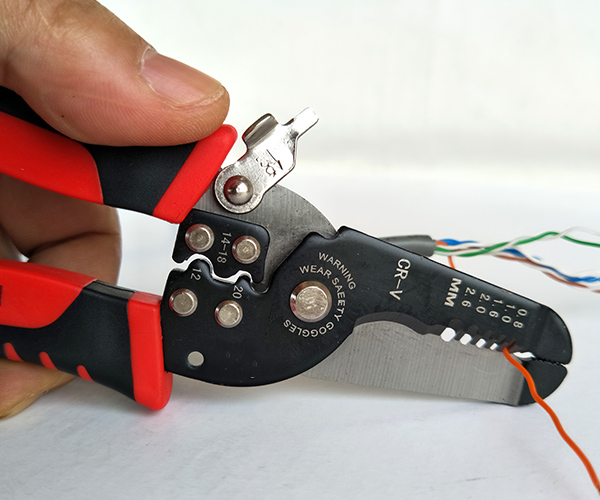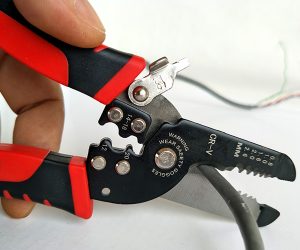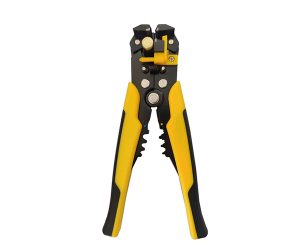Wire strippers are essential tools for both professional electricians and DIY enthusiasts. These devices allow you to remove the insulation from wires without damaging the underlying metal. Whether you’re working with electrical wires in a home renovation project or repairing car wiring, selecting the right type of wire stripper is crucial for the job. In this guide, we will walk you through the different types of wire strippers available, their key features, and how to choose the best one for your needs. We’ll also dive into some expert tips and share answers to common questions that professionals often have. So, let’s get started!
1. What Are Wire Strippers and Why Are They Important?
Wire strippers are tools designed to remove the insulation from electrical wires, exposing the metal beneath without damaging the wire. The process is vital in many applications, including electrical installation, repairs, and maintenance. So, what makes wire strippers so important? It’s all about precision and safety. Using the wrong tool can result in nicked wires, which could lead to electrical shorts or inefficiency. But here’s the kicker: the type of wire stripper you choose can make all the difference.
Wire strippers come in a variety of designs, each offering specific features tailored for different tasks. The right wire stripper can help increase productivity and accuracy, particularly in environments where time and precision are of the essence. For example, automatic wire strippers can speed up the process significantly, while manual options provide control in delicate tasks. Moreover, wire strippers are often ergonomically designed to minimize hand fatigue, ensuring comfort for prolonged use.
Understanding the different types of wire strippers and their features can make a huge difference in your overall productivity. You want tools that are not only efficient but also safe, reducing the risk of accidents and ensuring that your work is done correctly. This is why professionals often choose high-quality, purpose-built tools. Now, let’s dive into the various types of wire strippers available on the market.
| Type of Wire Stripper | Features | Common Use Cases |
|---|---|---|
| Manual | Requires physical effort | Basic electrical work, DIY projects |
| Automatic | Self-adjusting to wire size | High-volume tasks, repetitive work |
| Adjustable | Customizable for different gauges | Precision work, versatility in tasks |
| Insulation Piercing | Pierces insulation without cutting | Specialized applications in telecommunications |
2. What Are the Different Types of Wire Strippers?
When it comes to wire strippers, one size doesn’t fit all. Depending on the nature of the work, the type of wire being stripped, and the frequency of use, you might need one of several wire stripper designs. What’s the real story behind the different types? Here’s a breakdown of the main options available:
Manual Wire Strippers
Manual wire strippers are basic tools that require the user to apply physical force to strip the insulation from the wire. These tools are highly portable, budget-friendly, and simple to use, making them ideal for small tasks or personal DIY projects. But wait, there’s more to consider—manual wire strippers offer a high level of control, making them perfect for delicate jobs that require precision.
Automatic Wire Strippers
Automatic wire strippers are designed to adjust to different wire sizes automatically. This means you don’t have to worry about adjusting the tool manually every time you switch wire gauges. These strippers are a game-changer for high-volume electrical work where speed and efficiency are paramount. What’s the kicker? They make the job faster and less tiring, which is crucial for professionals dealing with large quantities of wiring.
Adjustable Wire Strippers
Adjustable wire strippers allow the user to customize the tool’s cutting depth, making them ideal for different wire gauges. If you frequently work with varying wire sizes, adjustable strippers provide the versatility you need. They can be a bit more complex than the manual version, but they’re well worth it for professionals who need more precision.
Insulation Piercing Tools
Insulation piercing tools are unique in that they pierce the insulation around the wire, allowing access without actually cutting into the wire. This type of stripper is used in specific applications, such as telecommunications or high-voltage situations where insulation integrity is paramount.
| Type of Wire Stripper | Advantages | Disadvantages |
|---|---|---|
| Manual | Cost-effective, control | Requires more effort, slower |
| Automatic | Quick, easy to use | Expensive, less control over precision |
| Adjustable | Versatile, precise | Can be complex for beginners |
| Insulation Piercing | Preserves insulation | Limited to specific applications |
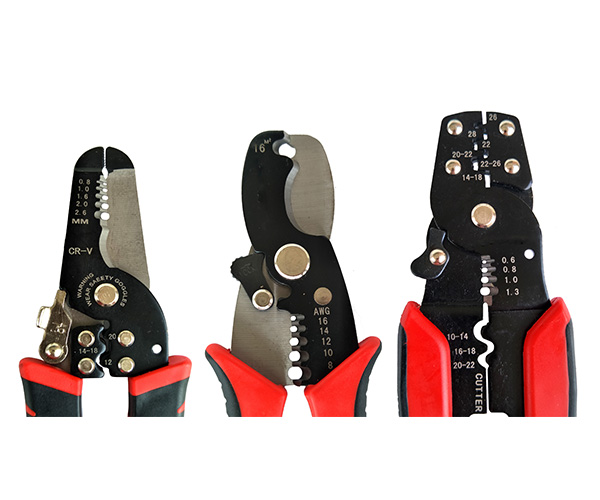
3. How Do Manual Wire Strippers Work?
Manual wire strippers are designed for simplicity, with a straightforward mechanism that allows you to remove insulation from wire by squeezing the handles. These tools typically feature two serrated jaws that grip the wire while a cutting blade strips the insulation. Ready for the good part? The simplicity of manual wire strippers makes them incredibly reliable and easy to use.
Here’s how it works: First, you insert the wire into the tool’s designated slot. Then, you press down on the handles to secure the wire in place. The cutting blades will then slice through the insulation, and once you release the pressure, the tool will let go of the wire, leaving it stripped and ready for use. While they require a bit more manual effort than automatic strippers, they offer great control, which is especially useful in delicate tasks where precision is necessary.
Manual wire strippers are ideal for smaller, less complex jobs. They are a go-to for DIYers and homeowners who don’t need to strip large volumes of wire regularly. They also offer a more tactile approach, allowing users to feel the wire and ensure they don’t accidentally damage the core.
| Feature | Manual Wire Strippers |
|---|---|
| Ease of Use | Simple, no-frills operation |
| Speed | Slower, but precise |
| Best For | Small, precise jobs |
| Price | Affordable |
4. How Do Automatic Wire Strippers Work?
Automatic wire strippers take all the guesswork out of stripping wire. Unlike manual tools, these strippers automatically adjust to the wire’s size, which makes them ideal for high-volume tasks. This is where it gets interesting: automatic wire strippers are powered by a spring or a hydraulic system that does all the hard work for you.
To use an automatic stripper, you simply place the wire into the tool’s clamping mechanism. As you squeeze the handles, the stripper automatically adjusts the cutting depth based on the wire size, stripping off the insulation in one swift motion. What’s more? Automatic strippers are built for speed, making them perfect for jobs where time is critical. They allow for faster workflow with less effort compared to manual strippers, making them a popular choice among electricians.
These tools are excellent for professionals who work with wires regularly. They not only speed up the process but also reduce hand fatigue, making them more comfortable for extended use. The main downside? They can be more expensive than manual options, but for high-volume tasks, they often prove their worth.
| Feature | Automatic Wire Strippers |
|---|---|
| Ease of Use | Effortless, adjustable |
| Speed | Fast and efficient |
| Best For | High-volume, repetitive tasks |
| Price | Higher than manual options |
5. What Are Adjustable Wire Strippers and When Should You Use Them?
Adjustable wire strippers offer the perfect balance of versatility and precision. These tools allow you to modify the depth of the blade to accommodate different wire gauges. What’s the catch? While they provide more customization, they may require more time to set up compared to automatic models. But here’s the kicker: once adjusted, they can handle almost any wire size, making them incredibly versatile.
To use an adjustable wire stripper, you first adjust the dial or screw to the desired wire gauge. This ensures that the stripper will cut precisely through the insulation without damaging the wire. Adjustable wire strippers are ideal for tasks that require flexibility, as they allow the user to strip a wide variety of wire sizes with just one tool. They’re also a good choice if you’re working with older wires or wires that vary in size.
For those who work on complex electrical systems or need to switch between different wire gauges often, adjustable wire strippers are a great investment. They give you the freedom to customize the tool to your exact needs, enhancing both the accuracy and efficiency of your work.
| Feature | Adjustable Wire Strippers |
|---|---|
| Customization | Adjustable blade depth |
| Versatility | Works with multiple wire sizes |
| Best For | Jobs with varying wire gauges |
| Complexity | Requires more setup time |
6. What Is an Insulation Piercing Tool and How Does It Differ from Wire Strippers?
An insulation piercing tool (IPT) is a specialized tool used to pierce the insulation of a wire without cutting it. This tool is commonly used in high-voltage applications or where insulation integrity is important, such as in telecommunications and certain industrial settings. So, how does it differ from traditional wire strippers? Here’s the scoop: wire strippers remove the insulation by cutting it away, while insulation piercing tools only pierce through the insulation, allowing for easier access without damaging the underlying wire.
Insulation piercing tools are incredibly useful in situations where you need to access the wire without compromising its insulation. For instance, they’re often used to create connection points on wires that remain insulated, or for testing purposes. What’s the real story? This tool ensures that the wire remains intact while still providing the necessary access.
However, insulation piercing tools are not suitable for every situation. They are highly specialized and should only be used in cases where insulation integrity is vital. If you need to remove the insulation entirely, traditional wire strippers are your best bet.
| Feature | Insulation Piercing Tool |
|---|---|
| Function | Pierces insulation, doesn’t cut |
| Best For | High-voltage, telecommunications |
| Versatility | Limited to specific tasks |
| Complexity | Simple but highly specialized |
7. What Are the Key Features to Look for in Wire Strippers?
When choosing wire strippers, you need to consider several key features to ensure you’re selecting the right tool for your tasks. The first feature you should evaluate is the ergonomics of the tool. Comfortable handles can make a significant difference during long jobs, preventing hand fatigue and reducing the risk of repetitive strain injuries. Ready for the good part? Many high-quality wire strippers come with padded grips that provide extra comfort and reduce strain.
Another important feature is the blade material. Wire stripper blades are usually made from hardened steel or other durable metals that can withstand repeated use. What’s the kicker? Choosing a stripper with high-quality blades ensures that your tool will last longer and continue to perform well.
Lastly, consider the safety features of the wire stripper. Many modern wire strippers come with built-in safety locks or automatic blade retraction mechanisms to prevent accidental cuts or injuries. These are especially useful in busy environments where multiple people might be using the tool.
| Feature | Manual Strippers | Automatic Strippers |
|---|---|---|
| Ergonomics | Comfortable, basic grips | Padded or ergonomic grips |
| Blade Material | Steel, carbon steel | Hardened, corrosion-resistant |
| Safety Features | Basic safety mechanisms | Safety locks, automatic retracting blades |
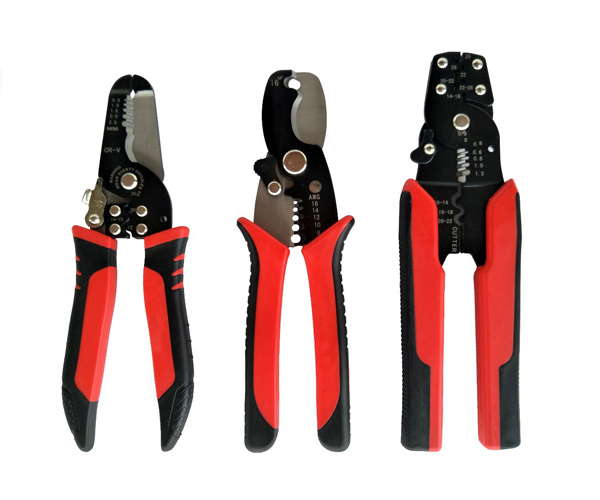
8. How Do You Choose the Right Wire Stripper for Your Needs?
Choosing the right wire stripper depends on several factors that cater to your specific needs and working environment. It’s not just about picking any tool off the shelf; it’s about finding the one that fits your job perfectly. So, what do you need to consider? First, think about the type of wire you’ll be working with. If you’re handling a variety of wire sizes, adjustable or automatic wire strippers could save you time and effort. For precision work with smaller wires, manual wire strippers provide that level of control.
Next, consider how frequently you’ll use the tool. For occasional use, manual wire strippers may suffice, but if you’re a professional electrician or someone who works on multiple projects, an automatic wire stripper may be a better fit. Ready for the good part? You also need to think about the comfort level. If you’re going to be using the tool for extended periods, opt for one that has ergonomic handles and safety features that reduce fatigue and injury.
Durability is another factor to keep in mind. Quality wire strippers may cost more initially, but their longevity makes them a worthwhile investment in the long run. What’s the kicker? The right wire stripper will not only make your job easier but will also enhance your overall productivity and safety. So, it’s not just about choosing a tool; it’s about investing in the right tool for the task at hand.
| Factor | Manual Wire Strippers | Automatic Wire Strippers | Adjustable Wire Strippers |
|---|---|---|---|
| Ease of Use | Moderate | Easy | Customizable |
| Best For | Small, precise tasks | High-volume work | Variety of wire sizes |
| Frequency of Use | Occasional | Frequent use | Frequent use, precise work |
| Durability | Moderate | High | High |
9. Are There Wire Strippers Designed for Specific Industries?
Yes, wire strippers are designed for specific industries, ensuring that professionals in those fields can work more efficiently and safely. For example, electricians who handle residential and commercial wiring often require wire strippers that can handle a wide variety of wire gauges and insulation types. But here’s the kicker: automotive and telecommunications industries also have specialized wire strippers that cater to their unique needs.
Electricians tend to favor tools that can handle both thin and thick cables, as they work with a diverse range of wire sizes. These wire strippers typically feature adjustable cutting depth or a variety of cutting blades that can strip different types of insulation. What’s the real story behind automotive wire strippers? These tools are designed with sharper cutting edges and fine tips to handle the finer wires often found in cars, while also being built to endure harsher, more demanding environments.
Telecommunications professionals, on the other hand, might need insulation piercing tools, which are ideal for working with high-voltage cables and maintaining insulation integrity. These tools are not only specialized but also designed with a focus on safety, making them indispensable for sensitive installations.
| Industry | Tools Required | Features |
|---|---|---|
| Electrical | Manual, Automatic, Adjustable | Multiple wire gauge compatibility, precision |
| Automotive | Manual, Fine-tipped | Sharp blades, durability |
| Telecommunications | Insulation Piercing Tools | Preserves insulation, safety features |
10. How to Properly Use and Maintain Wire Strippers?
Proper use and maintenance of wire strippers can significantly prolong the life of the tool and ensure its efficiency. So, how do you ensure optimal performance? First, always choose the right wire stripper for the job. Using the wrong tool can cause damage to both the wire and the stripper. When using a wire stripper, it’s essential to insert the wire fully into the tool, aligning it with the cutting blade to ensure a clean cut.
What’s the kicker? Regular maintenance is key to keeping your wire stripper in good working condition. After each use, clean the tool to remove any debris or metal shavings that may have accumulated. Make sure the blades are sharp, as dull blades can damage wires and make stripping more difficult. If you notice any rust or corrosion, wipe it down with an oil-soaked cloth to keep it from affecting the tool’s function.
Lastly, consider checking the alignment and spring mechanism (if applicable) periodically. For automatic wire strippers, this ensures that the self-adjusting feature works properly. Regularly maintaining your wire stripper can prevent costly repairs and keep your workflow smooth.
| Maintenance Task | Manual Wire Strippers | Automatic Wire Strippers | Adjustable Wire Strippers |
|---|---|---|---|
| Clean After Use | Yes | Yes | Yes |
| Blade Sharpening | Occasionally | Yes (if needed) | Yes (if needed) |
| Check Mechanism | Not Applicable | Yes | Yes |
| Rust Prevention | Yes | Yes | Yes |
11. What Are Some Common Mistakes to Avoid When Using Wire Strippers?
Using wire strippers might seem straightforward, but there are a few common mistakes that many people make. The first mistake is not adjusting the wire stripper correctly. If you’re using an adjustable or automatic model, make sure it’s set to the right gauge. Failing to do so can damage both the wire and the tool.
Another common mistake is not securing the wire properly. If the wire isn’t held firmly in place, you may strip too much insulation or even damage the wire itself. What’s the kicker? Using too much force is a mistake that can damage the tool or the wire. Wire strippers should require only a moderate amount of pressure to perform the job efficiently.
Lastly, remember to avoid cutting too deep or stripping too much insulation. It’s important to know how much insulation needs to be removed. Over-stripping can expose too much wire, which could cause electrical shorts or accidents.
| Mistake | Consequence | How to Avoid |
|---|---|---|
| Incorrect Adjustment | Damaged wire or tool | Set the stripper for the correct wire size |
| Improper Wire Placement | Inaccurate stripping, damage | Secure the wire before stripping |
| Over-stripping | Risk of electrical shorts | Strip just enough insulation to expose the wire |
12. What Are the Benefits of Investing in High-Quality Wire Strippers?
Investing in high-quality wire strippers can save you time, money, and frustration in the long run. But here’s the kicker: not all wire strippers are created equal. High-quality wire strippers are designed to withstand daily use, providing long-lasting durability that ensures you won’t need frequent replacements. These tools are made with premium materials such as high-carbon steel, which ensures sharpness and precision over time.
What’s the real story behind performance? Quality wire strippers provide cleaner, more accurate cuts, which results in better electrical connections. This is essential for professional work, where accuracy is key to safety and functionality. Ready for the good part? High-quality wire strippers are also ergonomically designed to reduce hand strain, making them more comfortable to use for extended periods. Investing in the right tool not only improves efficiency but also reduces the risk of workplace injuries.
| Benefit | High-Quality Wire Strippers |
|---|---|
| Durability | Longer-lasting, made of premium materials |
| Precision | Cleaner, more accurate cuts |
| Comfort | Ergonomic design reduces hand strain |
| Efficiency | Faster and safer workflow |
13. Can Wire Strippers Be Used for Other Purposes?
While wire strippers are primarily designed for electrical work, they can also be used in other industries or applications where precise cutting of wires or cables is required. For instance, wire strippers can be used for cutting small wires in DIY crafting projects, such as jewelry making. But wait, there’s more: in some cases, wire strippers can also be used to trim cables or thin metal wires in various mechanical applications.
However, keep in mind that the type of wire stripper you choose should match the material you’re working with. What’s the kicker? Using a wire stripper on the wrong material or gauge can damage the tool, so make sure you’re using the right tool for the job.
| Application | Usage | Tools Required |
|---|---|---|
| DIY Projects | Jewelry making, crafts | Manual or adjustable strippers |
| Mechanical Work | Cutting small wires or cables | Manual or insulation piercing tools |
| Electrical Installations | Stripping electrical wires | Automatic or adjustable strippers |
14. What Are Some Popular Brands of Wire Strippers?
There are many reputable brands that manufacture high-quality wire strippers. Some of the most popular brands include Klein Tools, Greenlee, and Irwin. These companies are known for producing durable, reliable tools that are used by professionals in various industries. But here’s the kicker: the best brand for you depends on your specific needs, such as the type of wire you work with and the frequency of use.
Klein Tools, for example, is renowned for their high-quality, ergonomic designs, making them a popular choice for electricians. Greenlee’s wire strippers are known for their durability and versatility, while Irwin focuses on offering user-friendly models that are ideal for DIY projects. What’s the real story? Each brand has its strengths, so it’s important to research the one that best fits your requirements.
| Brand | Popularity | Strengths |
|---|---|---|
| Klein Tools | High | Ergonomic, durable, high-quality |
| Greenlee | High | Versatile, durable |
| Irwin | Moderate | User-friendly, great for DIY |
15. How Much Do Wire Strippers Typically Cost?
Wire strippers come in a wide range of prices, from budget-friendly options to high-end professional tools. So, how much should you expect to pay? Manual wire strippers are generally the least expensive, with prices ranging from $10 to $30. Automatic and adjustable wire strippers, however, tend to be more expensive, with prices ranging from $30 to $100 or more, depending on the brand and features. Ready for the good part? The price difference often reflects the tool’s quality, durability, and added features, such as comfort grips, adjustable settings, or automatic adjustments.
What’s the kicker? High-quality, professional-grade wire strippers are a better investment in the long run, especially if you’re working on large projects. They may cost more initially, but their efficiency, comfort, and durability can save you time and effort down the road.
| Type of Wire Stripper | Price Range | Features |
|---|---|---|
| Manual | $10 – $30 | Affordable, basic |
| Automatic | $30 – $100 | Speed, efficiency, comfort features |
| Adjustable | $20 – $75 | Customizable, versatile |
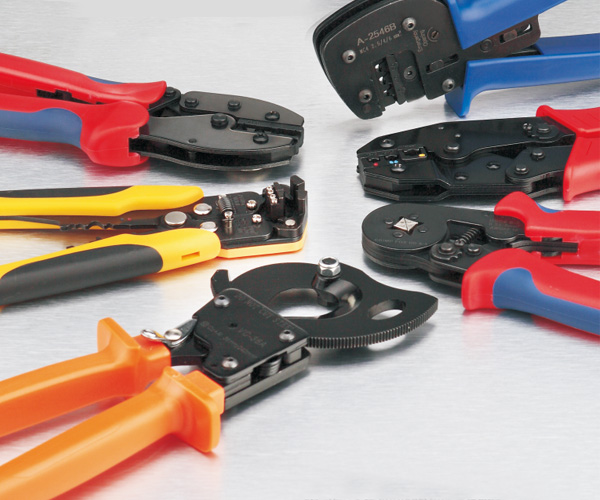
FAQ Section
Q1: What is a wire stripper?
Wire strippers are tools designed to remove the insulation from electrical wires, exposing the metal beneath without damaging the wire.
Q2: How does a wire stripper work?
A wire stripper works by clamping down on the insulation around a wire and then cutting through it to expose the bare wire.
Q3: What are the different types of wire strippers?
The main types of wire strippers include manual, automatic, adjustable, and insulation piercing tools. Each is designed for different applications.
Q4: Can wire strippers be used for other purposes?
Yes, wire strippers can also be used for tasks like crafting, jewelry making, and trimming cables in mechanical applications.
Q5: How do I maintain my wire stripper to keep it in good condition?
To maintain your wire stripper, clean the blades regularly, ensure the tool is properly adjusted, and store it in a dry place to prevent rusting.

